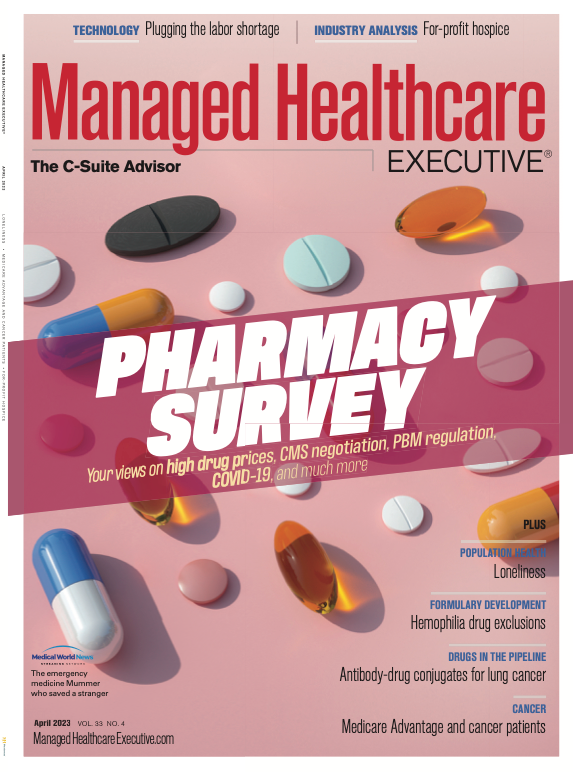For Fraudsters, COVID-19 Is the Sound of Opportunity Knocking
Less government oversight, a sense of urgency and the rise of telehealth created new openings for healthcare scam artists. Providers need to have their guard up.
Fraud has a long history in U.S. healthcare, but the loosening of government oversight and the addition of telehealth billing codes and diagnostic opportunities during the COVID-19 pandemic brought new opportunities.
© maxsim - stock.adobe.com

A vendor asked a doctor, passionate about helping people in recovery, to write prescriptions for a recovery program. He jumped at the chance to help patients, but he didn’t think it through. Another physician agreed to write prescriptions for her patients to receive remote glucose monitoring during the pandemic; the vendor said it was a foolproof technology.
The doctors subsequently realized these programs were scams and sought legal counsel from Amanda Hill, a healthcare attorney in Austin, Texas. The doctor recommending the remote monitoring told Hill that she signed up for the service partly because her parents had diabetes and had difficulty keeping their glucose levels monitored and under control.
Her clients, Hill says, saw a medical need and relied on their emotions, rather than thinking critically about the offers.
“As doctors, people are preying on you constantly. They need your signature to bill and collect money from Medicare,” says Hill, who also owns Guard My Practice, a video subscription service providing medical practice business advice. Although both doctors were not prosecuted, Hill says that the legal threat was real.
Opportunity knocks
Fraud has a long history in U.S. healthcare, but the loosening of government oversight and the addition of telehealth billing codes and diagnostic opportunities during the COVID-19 pandemic brought new opportunities. In recent years, the Justice Department has announced several health investigations targeting telehealth fraud with colorful names such as Operation Brace Yourself and Operation Double Helix.
Hill’s clients thought the government would not come after them because they did not intend to commit fraud. “But [the government] can because you signed the script. Your name is on the document. The government will 100% come after you,” and by then, the contracting company is long gone, Hill says.
Fraud is often used as a generic term for violations for the False Claims Act, Anti-Kickback Statute and the Physician Self-Referral Law, commonly referred to as the Stark Law. But fraud requires intent to cheat. It often gets lumped in with waste and abuse, such as ordering daily labs when weekly labs would be sufficient. Fraud can be committed in any number of ways, but typical scams include billing for the same service multiple times, billing for services or supplies that were never delivered and upcoding — billing for a service that was more complicated or intense than the one that was actually delivered.
Everything is tracked
There is nothing terribly original about many of schemes cooked up during pandemic. “The same old fraud is always happening,” Hill says. But fraudsters saw an opening because of the sense of urgency and the perception that the government was taking a vacation, Hill says. Companies like the ones that took advantage of Hill’s clients emerged.
CMS enacted COVID-19 testing guidance and regulations, with payments sometimes made to noncontracted laboratories, notes Callan Stein, J.D., a partner with Troutman Pepper, a law firm in Boston. “The government did it out of necessity with a mandate to increase testing access.” But that opened the door to new providers, some of them swindlers.
The pandemic let the telehealth genie out of its bottle. Although it is helpful to many patients and practices, virtual care also created new opportunities for fraudulent billing. In 2022, the government charged
36 defendants with $1 billion in fraudulent telehealth claims for unnecessary or unproven cardiovascular and cancer genetic testing and durable medical equipment such as wheelchairs and walkers.
To identify potential fraud, the government may look at the raw volume of telehealth visits and average number of hours and days billed. Telehealth providers with high volumes should pay attention to compliance and the medical necessity of all visits, Stein says.
Commercial payers may try to get back money that they believe was billed for inappropriately. Legally, the payments can be viewed as a breach of contract. But if federal investigators believe claims are suspicious, the situation is far more serious, Hill says.“It scares doctors to death, but if they accept Medicare (or other federal payer programs), they’re subject to this,” she says.
If the government finds a provider guilty of defrauding government payers such as Medicare, the provider can be imprisoned. Short of that, the government may demand repayment and exclude the provider from future Medicare payments. “That’s a huge draconian penalty, because if they exclude you from Medicare, it means you likely aren’t going to get hospital privileges anywhere,” which can affect job prospects, Hill says. Moreover, commercial payers often won’t work with a provider excluded from Medicare. “If you’re excluded from Medicare, you’ll need to find a different career or open up your own little concierge practice.”
Federal regulators use data analytics to comb through billing claims and identify patterns, Stein says. “Just because the pattern exists, doesn’t mean there’s fraud,” he says.Practices with legitimate billing patterns outside the norm should be careful about documentation and check that services met medical necessity threshold.
In 2022, the Department of Health and Human Services’ Office of Inspector General released a report identifying 1,714 providers considered high-risk Medicare billers in 2020. These providers billed $127.7 million in claims. The government said that they met at least one of seven measures for fraud, waste or abuse.
Hill notes that some physicians feel there’s an invisible shield around them if their practice is small or in a remote area. “The government tracks everything,” Hill says. All billing codes are trackable, and investigators look for doctors billing far outside the average. “If you submit 90% more surgery claims than others, it looks suspect and triggers a red flag. It doesn’t matter if it’s a practice of one or 50. Unless you have a cash-pay practice, no one is invisible to the government,” Hill says.
Government fraud cases, including kick-back allegations, require intent, Stein says. “In my experience, there’s usually not intent. Usually, we’re dealing with conflicting interpretation of complex and sometimes confusing regulations and good faith or differing opinions on how a CPT (Current Procedural Terminology)code ought to be applied,” Stein says. If one particular code is frequently used incorrectly, that mistake could be repeated hundreds or thousands of times.
Although most providers are not consciously trying to bilk the system, there’s room for proper coding improvement. “Are doctors compliant? My experience is that most are not,” says Guillermo J. Beades, a partner at Frier Levitt, a New York and New Jersey healthcare law firm. “They tell themselves they don’t have enough time.” As preventive medicine, Beades recommends that practices get outside audits from a certified professional coder. This encourages using proper codes, but they are also less likely to undercode for procedures, leaving money on the table.
Especially in tough times, vendors come out of the woodwork to offer services to boost practices’ margins, such as in-practice allergy testing. “Providers may not seek legal advice, taking the vendor’s word that the business is legal. “The majority of time (the providers) don’t know better,” Beades says.
Deborah Abrams Kaplan writes about medical and practice management topics for Managed Healthcare Executive and other publications.

Premiums for Employer-based Health Insurance Increased by 7% in 2024, Says KFF Report
Published: October 9th 2024 | Updated: October 9th 2024The 2024 increase is the same as last year's increase for family coverage. The foundation’s annual survey of employer health benefits also found that only 18% of large employers (200 employees are more) are covering the GLP-1 weight loss drugs.
Read More
Doug Chaet of Value Evolutions Discusses Value-based Payment Models, Where They Stand and More
September 29th 2022In this episode of Tuning In to the C-Suite, Managing Editor of Managed Healthcare Executive, Peter Wehrwein, speaks with President of Value Evolutions and MHE Editorial Advisory Board Member, Doug Chaet, FACHE, about value-based care's current standing, the status of select payment models like bundled and episodic, and more.
Listen
Florida Gets the OK. But Will Drug Importation from Canada Actually Happen?
March 5th 2024Canadian health officials warn that maintaining a drug supply for Canadians is their priority. The staunch opposition of the U.S. pharmaceutical industry may also be an obstacle to imports from north of the border.
Read More
We conducted our annual State of the Industry survey in the early part of November 2023. The survey had 432 respondents, of whom 56% self-reported working for a payer organization (pharmacy benefit manager, insurer or self-insured employer), 34% for a provider organization and the remainder for government or an unspecified “other” category.
Read More